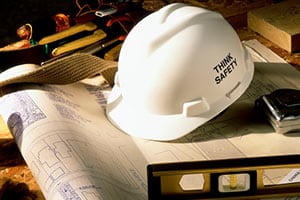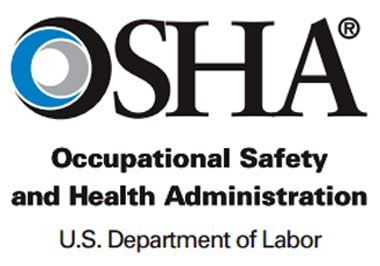

In certain states, you are required to have an Injury and Illness Prevention Plan (IIPP). Even if you don’t have that many employees or live in a state that doesn’t require an IIPP, having one is a good idea. This written program is the backbone of your entire safety program. It summarizes everything from who is responsible to guidelines for safety and how the company ensures these guidelines are followed. These are the eight required elements of an IIPP:
To learn more about IIPP, check out “What is an IIPP and how does it work?” If you are ready to develop a program, take a look at a sample program or build your own with help from OSHA by visiting the IIPP Creation eTool.
You likely have chemicals at your place of business that could be addressed with a Hazard Communication Program, but the need for a formal program is much lower for an office than for a company using hazardous chemicals. This written program explains how you notify your employees of the various exposures related to the chemicals used in the workplace. It requires you to have a chemical list and maintain safety data sheets for each chemical and make this information available to employees. You also must train your employees regarding their exposures at hire, if the employee changes jobs, or if any new chemicals are brought into the workplace. For more information about Hazard Communication, including an outline of the Globally Harmonized System (GHS), visit Fed OSHA.
Eighty degrees is the new trigger for needing a Heat Illness Prevention Plan and additional requirements for high heat are triggered when temperatures reach 95 degrees. The basic tenets for heat illness are providing water, rest, and shade. Employees and supervisors must be trained on methods to prevent heat illness and identify the signs and symptoms of heat illness. It would be best if you also had a plan in place for emergencies. OSHA has developed many resources for Heat Illness Prevention, including employee training and trainer training. Although many resources are directed towards construction and agricultural workers, don’t disregard this information if your workplace tends to get hot in the summer. Fatalities due to heat illness have occurred in other industries. The regulation still applies to you.
You should have a formal Forklift Program that addresses forklift training and certification. It would be best if you also had rules for the safe operation of the forklift, often referred to as a Powered Industrial Truck (PIT). All forklift training must be documented and should be repeated if there is an accident, if an employee is not following the rules, or if there are any changes to the workplace. A competent person must evaluate each operator prior to using the forklift and reevaluate them every three years. Forklifts should be inspected regularly. It’s easiest to incorporate this at the start of each shift. Forklift maintenance should also be documented. OSHA also offers some resources and training outlines.
Employees who operate their own vehicles for business represent your company. To protect your reputation, you should ensure that the employee has a valid driver’s license. It is in your best interest to obtain proof that they have insurance on their vehicle. To take it a step beyond that, you might have basic standards that the vehicle and/or insurance must meet, including passing an inspection. You are encouraged to speak with your broker or agent about this exposure for more customized recommendations, including whether you need to carry insurance to protect your company. If employees operate company vehicles for business, you should have a Fleet program in place. This formalizes any driver safety standards that you might have, including who is authorized to operate a company vehicle. The program should include a policy regarding the use of cell phones and hands-free devices, as well as a requirement to inspect vehicles on a regular basis. Vehicle maintenance should be documented.
The need for a Fall Prevention Plan varies depending on whether you work in construction or general industry and is based on the distance to the surface below and/or exposure to dangerous equipment below the work area. Because of the frequency and severity of injuries from falls, OSHA pays close attention to this exposure and has developed some great resources for training employees, including their Fall Prevention Campaign, which provides toolbox talks on Aerial Devices and Elevating Equipment, Fall Protection, Roofing, Ladder Safety, and a Scaffold eTool. Requirements are more stringent in general industry with a plan required if employees work at heights of 4 feet or higher. Requirements for construction require planning, proper equipment, and knowledgeable employees. The federal requirement requires fall protection at heights of 6 feet. Some states, including California, have different triggers. Always consider your state requirements when developing your safety plan; however, remember that ultimately, as the employer, you are responsible for your employee’s safety whether or not you meet or exceed OSHA guidelines. A competent person must design fall Protection Plans, which should be specific to each work site, even job sites, and include a fall rescue plan. Some resources are available online, including a template for a plan for Residential Construction.
A Lock Out Tag Out Program is intended to protect employees from potential injury due to stored energy. By following lock-out tag-out procedures, the likelihood of a machine accidentally being activated while under repair is reduced. Additionally, damaged equipment, like ladders, can be tagged out for repair. Lock Out Tag Out procedures are specific to each company and each piece of equipment. Employee training must be in place for affected employees. There are two levels of training since some employees must lock out equipment while others merely need to be aware of the lock-out tag out so as not to interfere with the procedure. Resources are available from OSHA.
A Blood Borne Pathogens (BBP) Program is important to any job in the healthcare industry, including home healthcare workers. Still, it is also part of a variety of industries that might have yet to consider this as an exposure. Think education, plumbing, and hospitality. If an employee could come into contact with bodily fluids, whether from changing diapers or due to the possibility that a used syringe could be found, this program should be in place, and employees should be trained. BBP has some crossover with Universal Precautions, a common term used for protecting oneself from exposure to bodily fluids. Employees must be offered the Hepatitis B Vaccine, although they may decline it. Employees should know what to do if they run into this situation, and the equipment to handle it must be available. A sample program is available from OSHA.
A Respiratory Protection Plan is required if your employees are required to use a respirator. A written program has several components, including medical evaluations and annual fit testing. The employer is also required to select the proper respiratory protection. If employees use a respirator only voluntarily, the requirements are slightly different; however, a written program and a medical evaluation are still required. Employees must be trained on the proper use, storage, and maintenance of respirators. California’s Department of OSHA has compiled some good resources available for the use of respirators.
If the work area is not intended for continuous occupancy and the means of exit or entry or restricted, but an employee can fit into the space to do work, it meets the requirements for a confined space. If, in addition to these three requirements, the space also adds chemical, atmospheric, mechanical, or other hazards, it may be considered a permit-required confined space. Depending on the space, there may be a need to monitor the air quality to ensure no flammable gases are present, to ensure the employee cannot become entrapped or engulfed by grain, sand, or some other material, or to check or monitor for other potential health hazards. Lock Out Tag Out may need to be implemented to enter some spaces. There are significant exposures created by working in confined spaces, including, but not limited to, asphyxiation, entrapment, engulfment, electrocution, or exposure to unguarded machinery. Each space must be evaluated to identify and address potential hazards before entry. Permit-required confined space entry requires an attendant to monitor the work in the confined space and prevent entry by other persons or accidental startup of equipment. It also requires a rescue plan. It is important to note that entry into the confined space may not be possible depending on the hazard creating the need for rescue. This must be factored into the rescue plan. Confined space is another exposure requiring specific planning for the company and each individual space. A knowledgeable and competent person should evaluate the space. Employees must receive training, and the program must be reviewed and revised regularly.
You may need to implement a Hearing Conservation Program. The purpose of a hearing conservation program is to prevent hearing loss which frequently occurs gradually over time without anyone realizing an injury is occurring. Hearing can be damaged suddenly, but most industrial hearing loss takes place due to long-term exposure.
Once a hearing is lost, the damage cannot be corrected. Hearing loss is common in specific industries; it is preventable with administrative and engineering controls, personal protective equipment, and employee training.
OSHA requires that an employer take action if sound levels meet or exceed the action level of 85 decibels on average over an 8-hour period. The action level is based on how loud the noise is and how long a person is exposed to that sound level. For example, a louder sound level exposure can be sustained for a shorter time period before action must be taken.
To determine if the action level is exceeded, a noise survey is often completed. Signs that your workplace likely needs a hearing conservation plan include employees complaining of ringing or humming in their ears or temporary hearing loss when leaving work and the need to shout or speak loudly to be heard in the workplace. If you have noticed any of these signs, take action.
If you need a Hearing Conservation Program, the following elements are required:
In addition to preventing hearing loss, taking action prevents accidents. According to the European Agency for Safety and Health at Work, the likelihood of accidents can be increased by noise when it:
